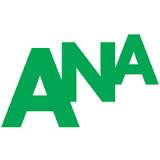‘Non transparent practices pervasive’: transparency report lashes media agency practices
The highly anticipated US advertisers association report into media rebates, credits and value banks has found that the practices are “pervasive” across the United States.
The report, written by intelligence firm K2 on behalf of the US ad association ANA, was released overnight and is expected to have major ramifications in global advertising.
It states that major media agencies not only received non-transparent rebates, often referred to as “kickbacks”, from media owners but also deliberately directed client spend into those businesses where they received a benefit or had a stake.



Hi Nic,
Should you not be clear up front that this report was only looking at the US market?
Phil
Hi Phil,
Is the first line which ends “across the United States” not clear enough?
Cheers,
Alex – editor, Mumbrella
Having worked at an agency at each of the holdings group I can confirm that this is 100% correct. Although they haven’t even scratched the surface when it comes to digital. There is so much churn at media agencies not because of excessive pitches but because staff are all realising they are part of something that is just not right and are moving to find a better, cleaner agency that does the right things by their clients, although not sure this exists. Always intrigued me how agencies went from constantly moaning about the race to the bottom on agency fees and yet they seemed to all of a sudden (last 10 years) be making millions in profit. And all of a sudden the porsches and ferraris started to appear in the carparks! About time this murky industry is exposed.
I’m personally looking forward to the comments from agencies like Group M, on the back foot, desperate to defend themselves and say these practices are limited to other markets.
Accurate report on the state of the agency – client relationship. Corrupted.
From experience this report corresponds to the Australian market. I have first hand experience in approving payments for “research” with the fee being a direct % of the spend commitment by that agency. No commitment to the “research” project resulted in significantly reduced revenues (and I mean significant – how does 17.5% sound)! But let’s not all get hysterical, now the agencies should be provided the same opportunity to provide a detailed view of their side of the argument. Maybe KPMG, PWC could provide the level of independence required, what about Mark Ritson! The brief needs to look into value banks, make goods, volume discounts, etc, etc.
At what point do agencies hold their hands up and say “we haven’t been upfront enough about what we do with your money mr client.” Lots of vague statements by group CEO’s, and no comments from those same CEO’s condemning rebates / dual rates / value banks. The only condemnation is for the ANA which speaks volumes. If your agency is clean – come out and 100% guarantee it instead of condemning the whistle blowers.
Thank you ANA. Please keep writing about this issue Mimbrella. Perhaps you could ask each Australian media agency CEO to give one word answers to “Does your agency: Accept rebates from publishers; Run value banks; Run double rates” aka Oprah vs Lance Armstrong!